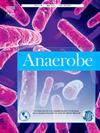Genomic analysis and mobile genetic elements carriage of Clostridium perfringens type A
IF 2.6
3区 生物学
Q3 MICROBIOLOGY
引用次数: 0
Abstract
Objectives
To explore a comprehensive genomic analysis of Clostridium perfringens type A strains from diverse regions in China, investigating their virulence genes, antibiotic resistance genes, and mobile genetic elements (MGEs) to inform strategies for infection control and resistance gene surveillance.
Methods
We conducted whole-genome sequencing on 168 C. perfringens type A strains from nine provinces in China (2016–2021). Previously described alpha-toxin (PLC) sequence typing for C. perfringens was used for comparisons with core genome multilocus sequence typing. Virulence genes, antibiotic resistance genes, and MGEs, including CRISPR/Cas, prophages, and plasmids of C. perfringens type A were investigated by molecular and bioinformatic methods.
Results
PLC type II contained the largest number of isolates (n = 44). The same type strains were largely clustered in the same branches. Tetracycline resistance genes tetA(P) and tetB(P) had high prevalence in type A isolates. 395 prophages were predicted including 265 “incomplete,” 55 “questionable,” and 75 “intact” prophages. CRISPR/Cas systems were more common in isolates from humans (63 %) than in those from animals and food (52 % and 46 %, respectively). Fifty-seven percent of strains likely had the tcp conjugation locus (tcpC to tcpH), and 12 isolates likely carried the conjugative pCW3 plasmid. Type A strains exhibited fewer plasmid-encoded toxins.
Conclusions
cgMLST analysis demonstrated some micro-evolution and regional transmission trends within type A, which exhibited partial correlated with PLC typing. This study highlights the need for enhanced surveillance of antimicrobial resistance and pathogenicity-associated MGEs in C. perfringens type A.
A型产气荚膜梭菌基因组分析及可移动遗传元件携带。
目的:对中国不同地区产气荚膜梭菌a型菌株进行基因组分析,了解其毒力基因、抗生素耐药基因和移动遗传元件(MGEs),为感染控制和耐药基因监测提供依据。方法:对2016-2021年中国9省168株A型产气荚膜荚膜杆菌进行全基因组测序。利用先前描述的产气荚膜荚膜荚膜菌α毒素(PLC)序列分型与核心基因组多位点序列分型进行比较。采用分子和生物信息学方法研究了产气荚膜荚膜菌A型的毒力基因、耐药基因和MGEs,包括CRISPR/Cas、噬菌体和质粒。结果:PLC II型菌株数量最多(n=44);同一类型菌株大多聚集在同一枝上。四环素耐药基因tetA(P)和tetB(P)在A型分离株中流行率较高。预计有395个噬菌体,包括265个“不完整”,55个“可疑”和75个“完整”的噬菌体。CRISPR/Cas系统在人类分离株(63%)中比在动物和食物分离株(分别为52%和46%)中更常见。57%的菌株可能具有tcp偶联位点(tcpC到tcpH), 12株菌株可能携带偶联pCW3质粒。A型菌株表现出较少的质粒编码毒素。结论:cgMLST分析显示A型病毒有一定的微观演化和区域传播趋势,与PLC分型部分相关。本研究强调了加强对A型产气荚膜荚膜杆菌抗菌素耐药性和致病性相关MGEs监测的必要性。
本文章由计算机程序翻译,如有差异,请以英文原文为准。
求助全文
约1分钟内获得全文
求助全文
来源期刊

Anaerobe
生物-微生物学
CiteScore
5.20
自引率
8.70%
发文量
137
审稿时长
76 days
期刊介绍:
Anaerobe is essential reading for those who wish to remain at the forefront of discoveries relating to life processes of strictly anaerobes. The journal is multi-disciplinary, and provides a unique forum for those investigating anaerobic organisms that cause infections in humans and animals, as well as anaerobes that play roles in microbiomes or environmental processes.
Anaerobe publishes reviews, mini reviews, original research articles, notes and case reports. Relevant topics fall into the broad categories of anaerobes in human and animal diseases, anaerobes in the microbiome, anaerobes in the environment, diagnosis of anaerobes in clinical microbiology laboratories, molecular biology, genetics, pathogenesis, toxins and antibiotic susceptibility of anaerobic bacteria.
 求助内容:
求助内容: 应助结果提醒方式:
应助结果提醒方式:


